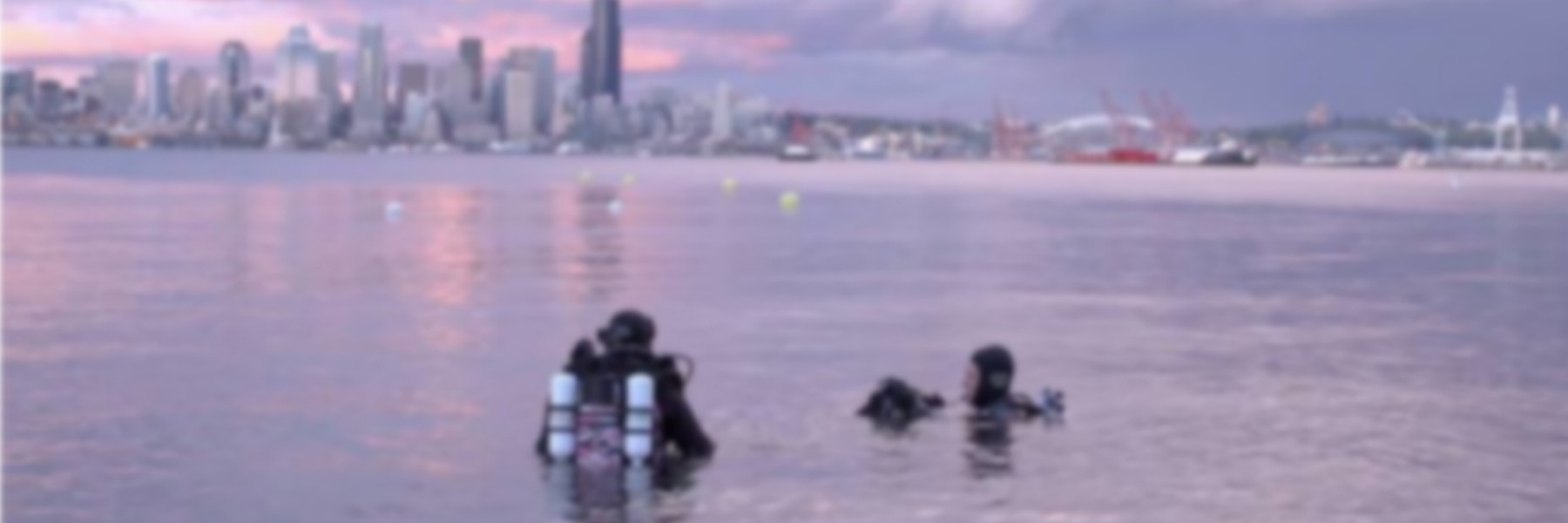Seastar Wasting Disease changed my local dive sites.
Diving is funny, 20 years ago people asked ‘what is there to see deep?’ when my dive team and I were just getting started learning to dive deeper so we could investigate more shipwrecks in Puget Sound and Lake Washington. These days ‘tech certification’ is readily available and not nearly as noteworthy. From a marketing point of view, it seems we succeeded. These days the question has changed… More often than not, when people see me throwing on a single tank instead of a set of doubles or a rebreather they’ll ask “what is there to see shallow, I thought all the really cool stuff is deeper, on the big wrecks and walls and things, isn’t that why you got tech certified?”.
I will then recount a story about the pilings in Cove 1. We’d dove The Monolith, a dive in 100’ of water (tide dependent) which wouldn’t be considered that big a deal except it is a long swim in the deep recreational zone, (the zone that will drain your tank faster than you expect and put you into deco) and a bit of navigation to find. The Monomyth as some call it jokingly because its hit or miss finding it and part of the challenge is NOT spending your whole dive on the mud dunes searching, is a site that is best visited with scooters and double tanks or a rebreather. On this particular day, we visited a giant octopus, racked up wee bit of deco swimming across acres of mud, etc… All in all a successful northwest dive, but the best part was the final 20-25 min. Visibility was quite stunning and we were just wandering around at deco/end of dive nonsense when we came upon the first set of pilings.
Strangely enough I’d never visited them before, mostly because the only purpose of cove 1 in my mind was a mud hole for OW 1 students (to keep them away from Cove 2 or Junkyard) or as an entry point to dive the Monolith. Maybe it was just the visibility and the light (and my old camera doesn’t do it justice) the residual nitrogen and O2 euphoria at deco, but similar to the epic dive on the vertical barge at Shilshole with the sun streaming down making rippling patterns on the seafloor the thought crossed my mind that ‘this was one of the most beautiful places, and how ironic that it was right here in 20’ of water, city backdrop and salty’s a stones throw away, almost on top of a superfund site.
Well, you get my drift… Anyhow, part of what made it brilliant was the biodiversity, the colors, the invertebrates, the fish… It just felt so alive.
When sea star wasting syndrome hit and I was trying to think of transects that people could easily video (or maybe already had some baseline video of – myself included) with any UW camera or OpenROV I opted for cove 1. The transects are all easily findable objects, “face of the outfall” “rock pile to outfall”, Piling set 1, 2, 3, 4, 5 etc… And most important, I knew somewhere in my archives I had older video showing the biodiversity of the pilings. Here a ‘changes over time’ video (you know how much I love making those) from 2006 to the present.
Now we need to document the changes in biodiversity and the recovery of the sea stars. Even though they found an associated virus, the story is not done. There are years of ecological observations to be made. Observe with diver eye, still or video camera, or home-brew ROV, however you like, just get out, document and observe. I would be happy to make you a collaborator on our Open Explorer digital field journal (or make your own for your local dive site)
so that we the diving community can document the continued changes together.
It won’t change the world or the course of the disease, but having a record of observations will help us recognize changes when we see them.
Short version:
Longer version with more intervals.

1 comment for “Before and After Seastar Wasting Disease”